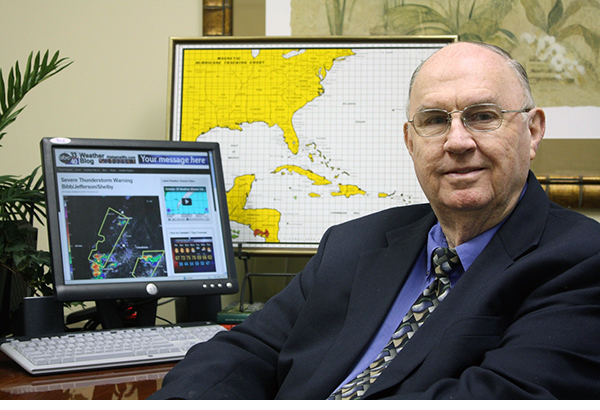NWS and Red Cross Reconcile Their Automobile Tornado Safety Recommendation
Our guest on WeatherBrains Monday night will be a timely one. Dr. Thomas Schmidlin from Kent State University will talk about his thought provoking paper on tornadoes and automobiles.
Several months ago, the American Red Cross followed Dr. Schmidlin’s line of thinking and broke rank with traditional NWS safety rules. They changed their advice to recommended that instead of leaving your vehicle if you find yourself being overtaken by a tornado with no shelter available, that the car provided more safety than being outside in the open, even in a ditch.
The NWS didn’t follow suit and continued with their same call to action statements and safety rules during this tornado season.
The contrasting information presented a potentially confusing situation for broadcasters and the public.
On June 22nd, the National Weather Service and the American Red Cross issued a joint statement on tornado safety. The release reiterated what the best options in a tornado are (an underground shelter, basement or safe room.) The next best option is a small, windowless room or hallway on the lowest floor of a sturdy building. People in mobile homes should go to the nearest sturdy building or shelter.
If you are caught outdoors, the new safety rules say that you should quickly walk or run to a nearby basement, shelter or sturdy building, If you cannot walk to a shelter in time, it is advisable to get in a vehicle, buckle your seat belt and drive to the closest sturdy shelter. If flying debris occurs, pull over and park, and consider the better of the following two options:
1. Stay in the car. Put your head down underneath window level, cover your head with hands or a blanket
2. If you can get noticeably lower that the level of the roadway, exit your car and lie in that area, covering your head with your hands.
The choice is yours based on the situation.
From the statement: The important thing to understand is that if you find yourself outside or in a car with a tornado approaching and you are unable to get to a safe shelter, you are at risk from a number of things outside your control, such as the strength and path of the tornado and debris from your surroundings. This is the case whether you stay in your car or seek shelter in a depression or ditch, both of which are considered last resort options that provide little protection. The safest place to be is in an underground shelter, basement or safe room.
I think that the joint statement is an accurate, reasonably understandable set of rules that cover a very complex subject. My commitment will be to continually hit these items in our releases during severe weather events.
It will be a lively and interesting discussion Monday night.
Participate in the debate by weighing in on our blog poll question before Monday night on what your instinctive action would be. Also: Is the message too complicated? What other tornado safety issues confuse you? Can you see any ways for us to communicate weather safety messages?
Category: Pre-November 2010 Posts















